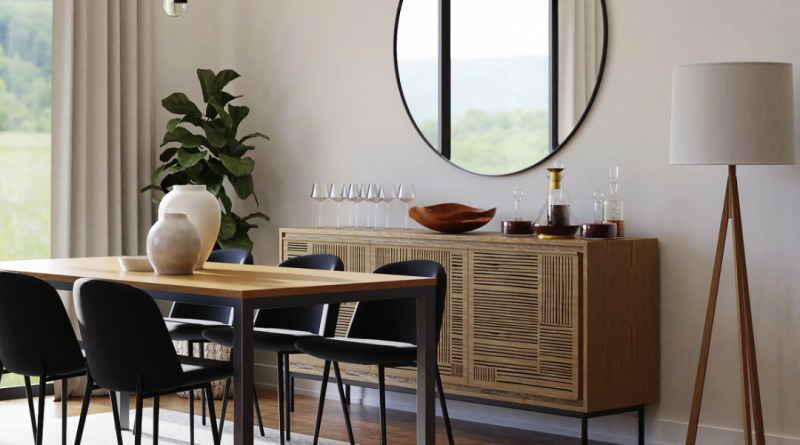Modern Mid-Century Floor Lamp: A Timeless Lighting Solution
Mid-century modern design emerged as a significant movement in the mid-20th century, primarily between the 1940s and 1960s. This period was marked by a departure from the ornate styles of the past, embracing simplicity, functionality, and a connection to nature. The roots of this design philosophy can be traced back to the Bauhaus school in Germany, which emphasized the unity of art and technology.
Influential figures such as Walter Gropius and Mies van der Rohe laid the groundwork for a new aesthetic that would later flourish in America. After World War II, the United States experienced a cultural shift, with an increasing focus on modernism as a response to the complexities of contemporary life. The post-war era saw a surge in consumerism and a desire for innovative design that reflected the optimism of the time.
Designers like Charles and Ray Eames, George Nelson, and Arne Jacobsen became prominent figures, creating furniture and lighting that embodied the principles of mid-century modernism. Their work often featured organic forms, clean lines, and an emphasis on materials such as molded plywood, fiberglass, and metal. This design movement not only transformed residential spaces but also influenced commercial architecture and public spaces, leading to a lasting legacy that continues to resonate in today’s design landscape.
Characteristics of Mid-Century Floor Lamps
Mid-century floor lamps are characterized by their sleek lines, minimalist forms, and functional designs that prioritize both aesthetics and utility. One of the defining features of these lamps is their use of geometric shapes, often incorporating elements like cones, spheres, and cylinders. The combination of these shapes creates a visually striking silhouette that complements various interior styles.
Additionally, mid-century floor lamps frequently utilize materials such as brass, wood, and glass, which contribute to their timeless appeal. Another hallmark of mid-century floor lamps is their versatility in lighting options. Many designs incorporate adjustable features, allowing users to direct light where it is needed most.
This adaptability makes them suitable for various settings, from reading nooks to living rooms. The color palette of mid-century lamps often includes bold hues alongside muted tones, reflecting the era’s fascination with vibrant yet harmonious combinations. The interplay of color and form in these lamps not only serves a practical purpose but also enhances the overall aesthetic of a space.
The Versatility of Modern Mid-Century Floor Lamps
Modern mid-century floor lamps Aluredesign have proven to be remarkably versatile, seamlessly fitting into a wide range of interior design styles. Their clean lines and understated elegance allow them to complement both contemporary and traditional settings. For instance, a sleek brass floor lamp can serve as a striking focal point in a minimalist Scandinavian-inspired room while also harmonizing with more eclectic decor styles that feature vintage or artisanal elements.
Moreover, the adaptability of mid-century floor lamps extends beyond their aesthetic appeal; they also offer functional versatility. Many designs come equipped with adjustable arms or shades that allow users to customize the direction and intensity of light. This feature is particularly beneficial in multi-functional spaces where lighting needs may vary throughout the day.
Whether illuminating a cozy reading corner or providing ambient light for entertaining guests, modern mid-century floor lamps can effortlessly transition between roles.
How to Incorporate Mid-Century Floor Lamps into Your Home Decor
Incorporating mid-century floor lamps into home decor requires thoughtful consideration of both style and function. One effective approach is to use these lamps as statement pieces that draw attention while enhancing the overall design narrative of a room. For example, placing a bold lamp with an eye-catching shade in a neutral-toned living room can create a striking contrast that adds visual interest without overwhelming the space.
Another strategy is to consider the scale and proportion of the lamp in relation to other furnishings. A tall, slender floor lamp can create an illusion of height in a room with low ceilings, while a wider base can anchor a space filled with lighter furniture. Additionally, layering lighting sources is essential for creating a well-lit environment; combining mid-century floor lamps with table lamps or overhead fixtures can provide both ambient and task lighting, ensuring that every corner of the room is adequately illuminated.
Modern Mid-Century Floor Lamps: A Timeless Lighting Solution
Modern mid-century floor lamps are not merely relics of a bygone era; they represent a timeless lighting solution that continues to resonate with contemporary sensibilities. Their enduring appeal lies in their ability to blend form and function seamlessly. Unlike many fleeting design trends, mid-century modernism emphasizes quality craftsmanship and thoughtful design principles that stand the test of time.
The materials used in modern mid-century floor lamps also contribute to their longevity. High-quality metals like brass and stainless steel are not only durable but also develop a unique patina over time, adding character to the piece. Similarly, wood elements can bring warmth and texture to a space while maintaining the clean lines characteristic of mid-century design.
As homeowners increasingly seek sustainable and timeless pieces for their interiors, modern mid-century floor lamps emerge as an ideal choice that marries aesthetic appeal with practicality.
The Impact of Mid-Century Floor Lamps on Interior Design
The impact of mid-century floor lamps on interior design extends far beyond their functional role as light sources; they have become iconic symbols of an entire design philosophy that values simplicity and innovation. These lamps have influenced countless designers and homeowners alike, inspiring them to embrace clean lines and organic forms in their own spaces. The aesthetic principles established during the mid-century modern movement continue to inform contemporary design trends, making these lamps relevant even decades after their inception.
Moreover, mid-century floor lamps have played a crucial role in shaping the way we think about lighting within interior spaces. The emphasis on task-oriented lighting has encouraged designers to consider how light interacts with various elements in a room. This has led to more thoughtful arrangements of furniture and decor that prioritize both functionality and visual harmony.
As such, mid-century floor lamps have not only illuminated spaces but have also contributed to a broader understanding of how lighting can enhance our daily lives.
Choosing the Right Mid-Century Floor Lamp for Your Space
Selecting the right mid-century floor lamp involves careful consideration of several factors, including style, size, and functionality. First and foremost, it is essential to identify the overall aesthetic of your space. A lamp with a sculptural design may serve as an artistic focal point in an otherwise minimalist room, while a more understated piece can complement existing furnishings without competing for attention.
Size is another critical aspect to consider when choosing a mid-century floor lamp. A lamp that is too large can overwhelm a small room, while one that is too small may get lost among larger furniture pieces. It’s advisable to measure both the height and width of potential lamp placements to ensure they fit harmoniously within the space.
Additionally, consider how the lamp will be used; if it’s intended for reading or task lighting, opt for designs with adjustable features or shades that direct light effectively.
Maintenance and Care for Modern Mid-Century Floor Lamps
Maintaining modern mid-century floor lamps is essential for preserving their beauty and functionality over time. Regular cleaning is crucial; dusting with a soft cloth can prevent buildup that may dull finishes or obscure intricate details. For metal components, using a gentle metal polish can help maintain their luster without damaging the surface.
It’s important to avoid harsh chemicals or abrasive materials that could scratch or tarnish finishes. In addition to cleaning, periodic checks on electrical components are advisable to ensure safety and performance. Inspecting cords for fraying or damage can prevent potential hazards while ensuring that the lamp operates efficiently.
If any issues arise with switches or bulbs, addressing them promptly will prolong the life of the lamp and maintain its aesthetic appeal within your home decor. By investing time in care and maintenance, homeowners can enjoy their modern mid-century floor lamps for years to come while celebrating the enduring legacy of this iconic design movement.


